
As we approach Karthigai Deepam, a sacred Hindu festival for Tamilians, we take a moment to recognize how the Sri Lankan state has long targeted and erased Eelam Tamil heritage of all Tamilians by destroying and damaging thousands of Hindu temples. 

According to scholar M. Neiminathan and the “Federation of Saiva (Hindu) Temples”, around 2,076 Hindu temples have been destroyed in Sri Lanka, most prominently in the northeast part of the island where the Eelam Tamils predominantly reside. 
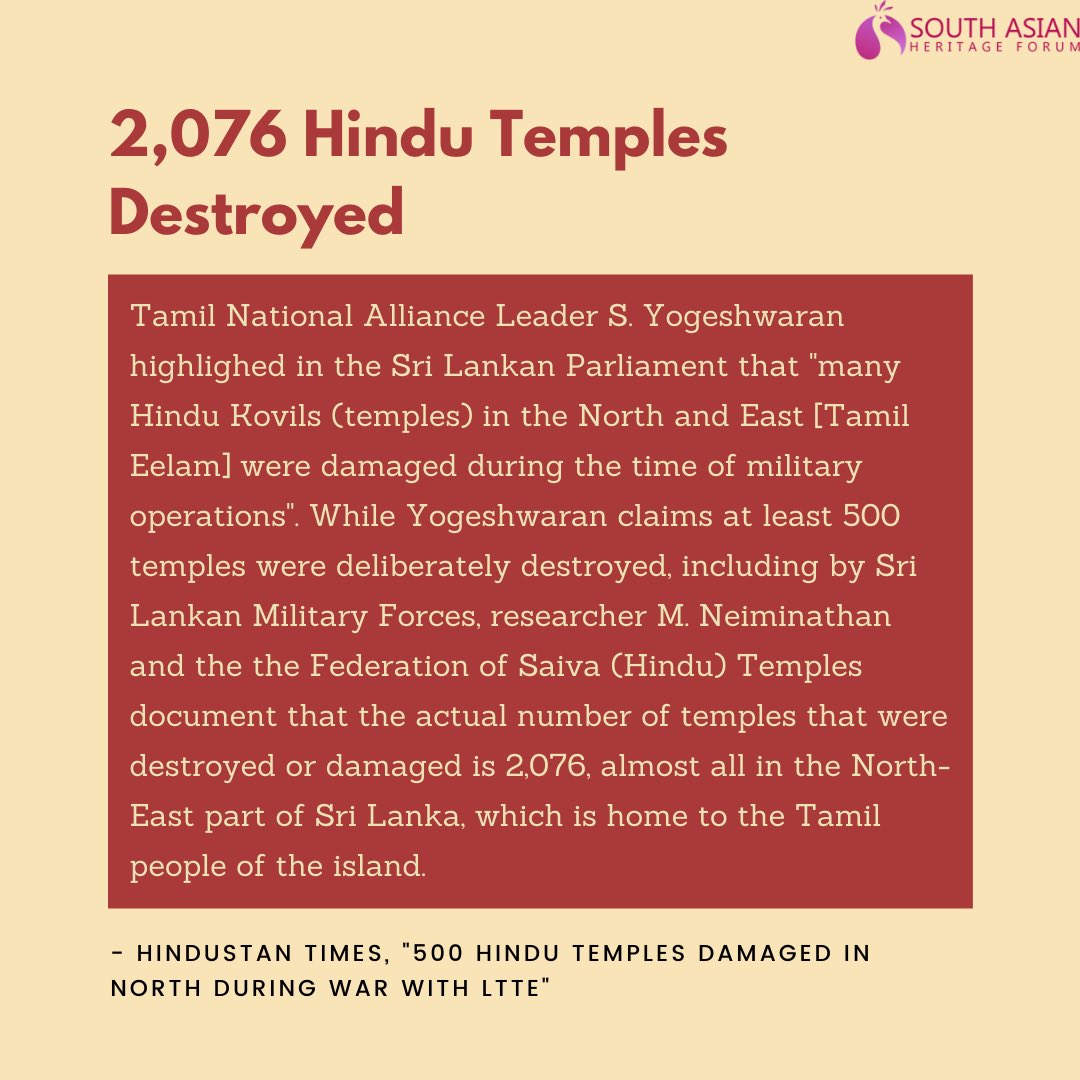
One of the most prominent temples to be destroyed was a temple to the Hindu God Siva in the town of Thirukketheeswaram. It was “desecrated and the jewelry, brass utensils, oil lamps, and many other valuables that were used in the temple have been plundered by state armed forces.” 
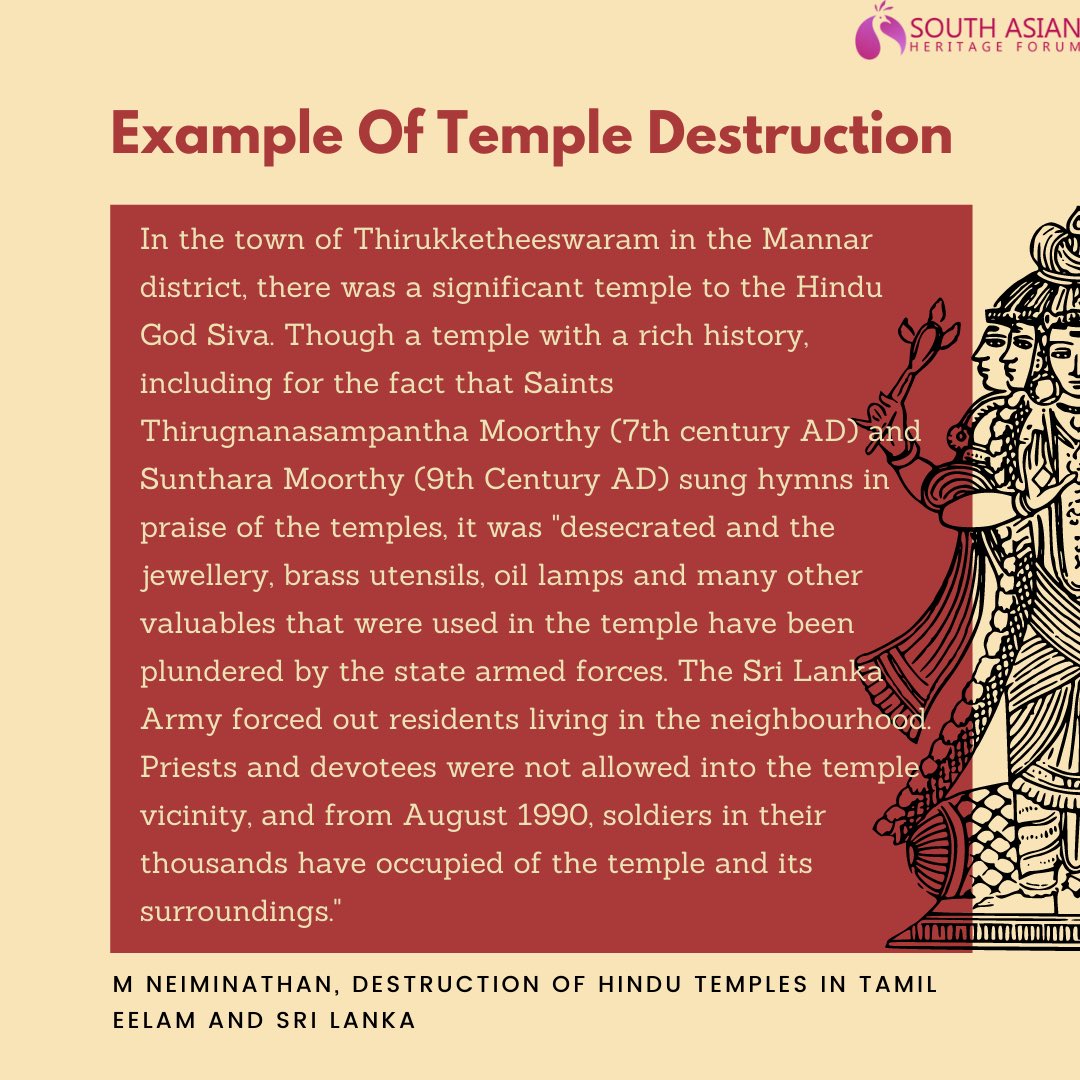
The “most heinous and unforgivable part of the vandalism is the disfigurement and the gouging of the Third Eye of the icon of Somaskanda”, a form of Siva worshiped by Eelam Tamils at this aforementioned temple that was deliberately destroyed by the Sri Lankan state. 
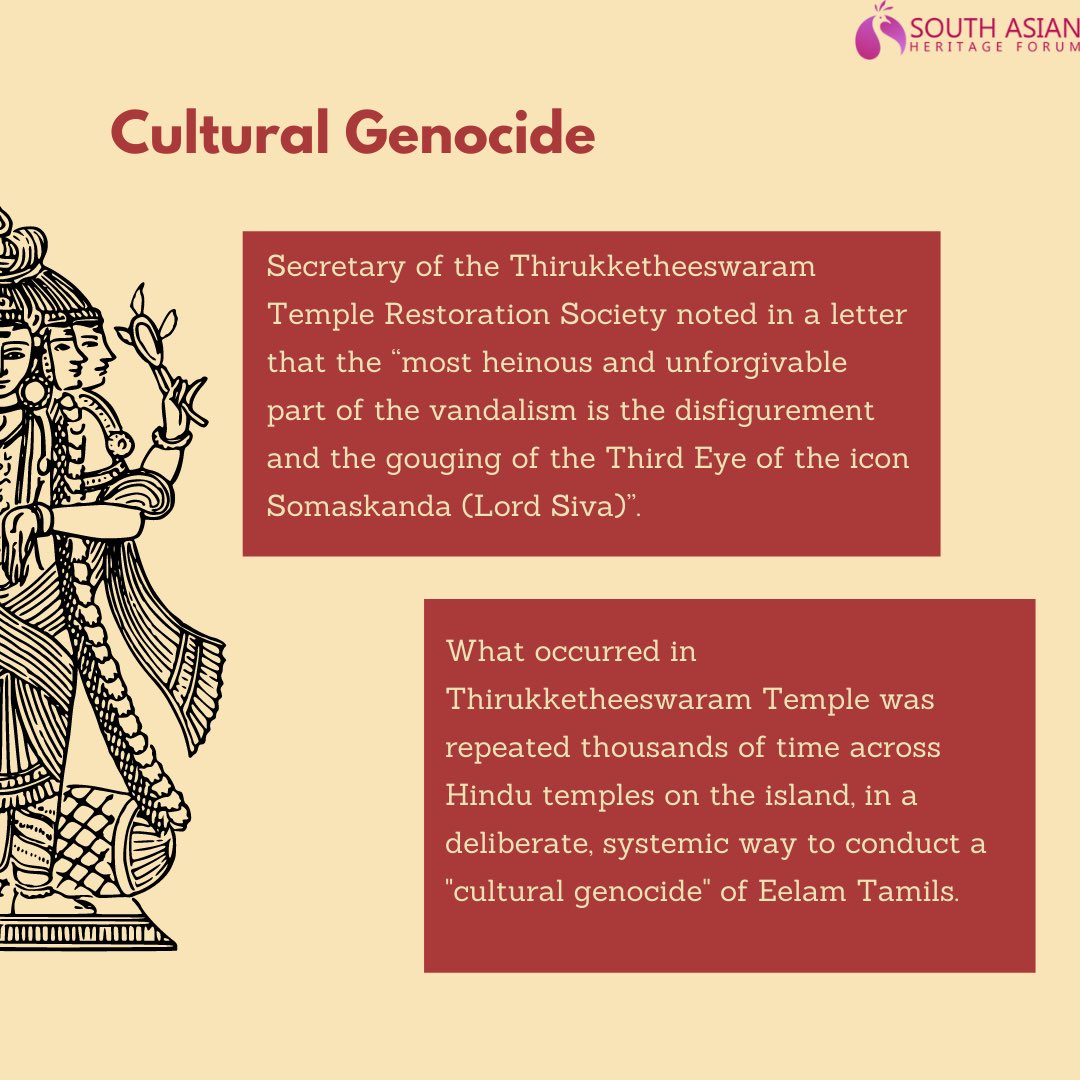
In addition to Hindu temple destructions, the Sri Lankan State arrested & imprisoned Hindu priests, fired shells on Tamil devotees who gathered at Hindu temples to celebrate festivals, arrested & detained devotees going to temples, and erected Buddha statues to annex temples. 
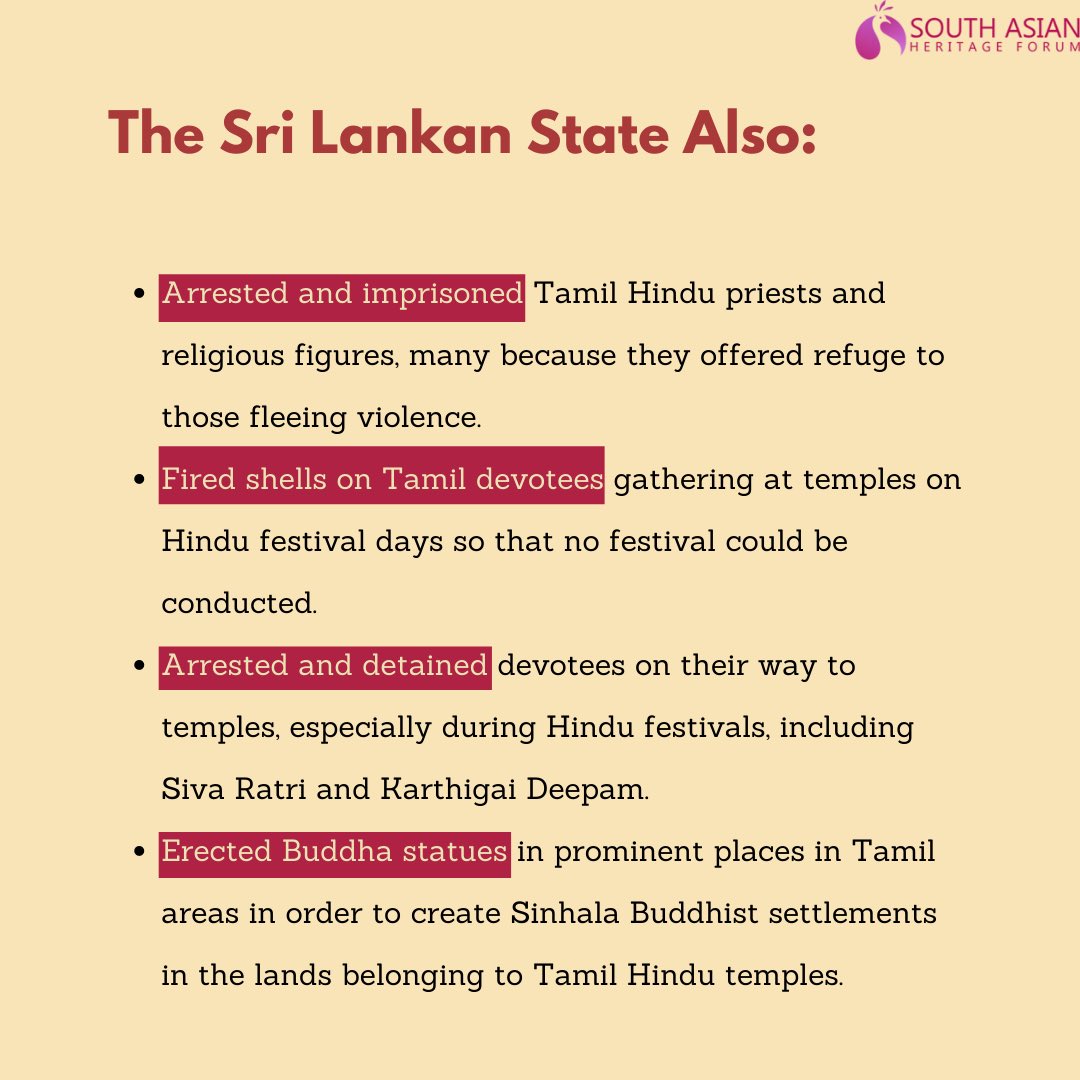
Unfortunately, this targeting of Hindu sites has not ended. For example, in 2019, a Hindu temple to Pillaiyar (Ganesha) was destroyed to build a Buddhist Vihara in Kanniya, and Tamil protestors were obstructed, blocked, and assaulted for opposing the destruction. 
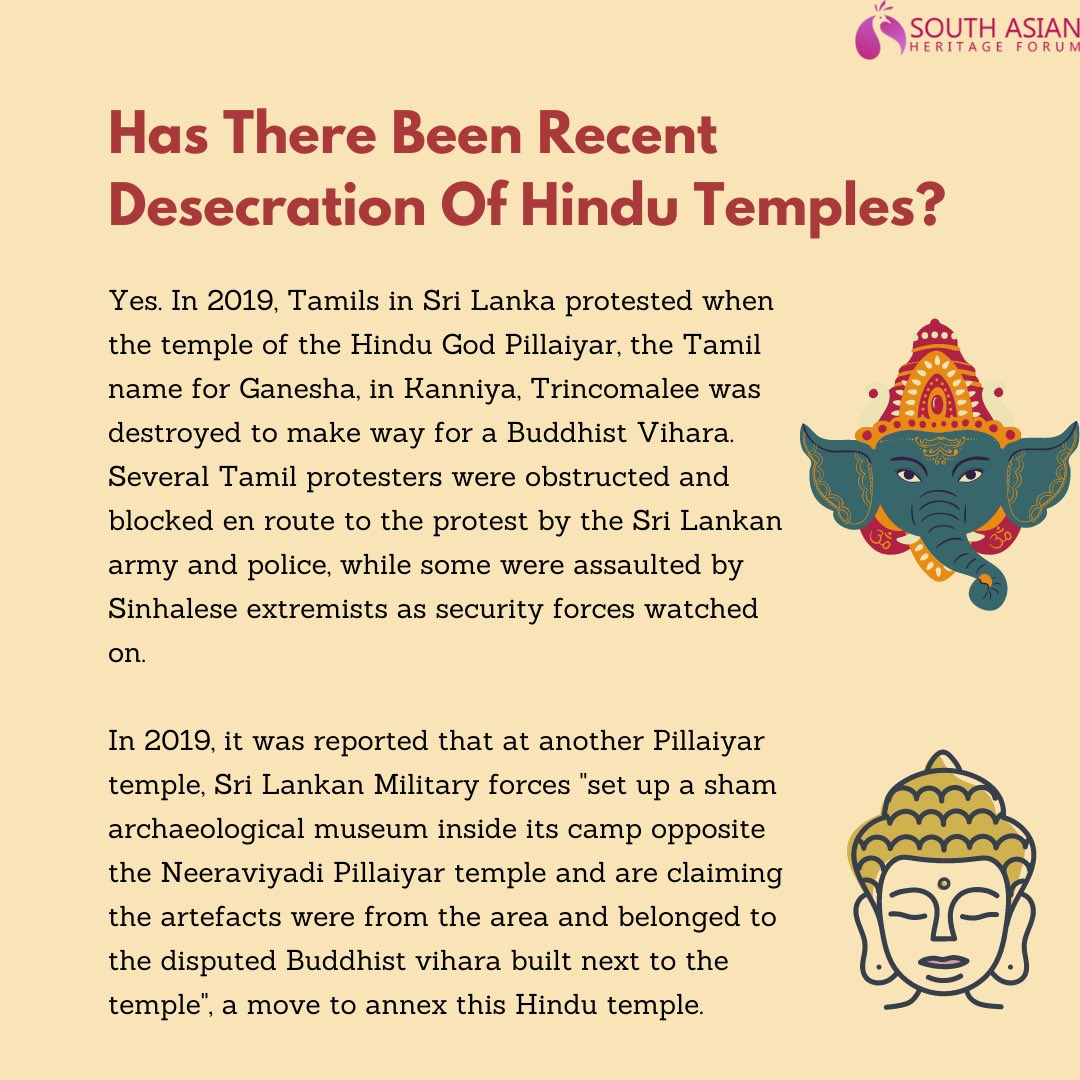
Another example of desecration comes from the Nainativu Nagapooshani Amman Temple, which is so ancient that it was mentioned in Greek texts. In 2020, Sri Lankan troops desecrated the temple & outraged the Tamil Hindu devotees by refusing to take off their shoes inside the temple. 
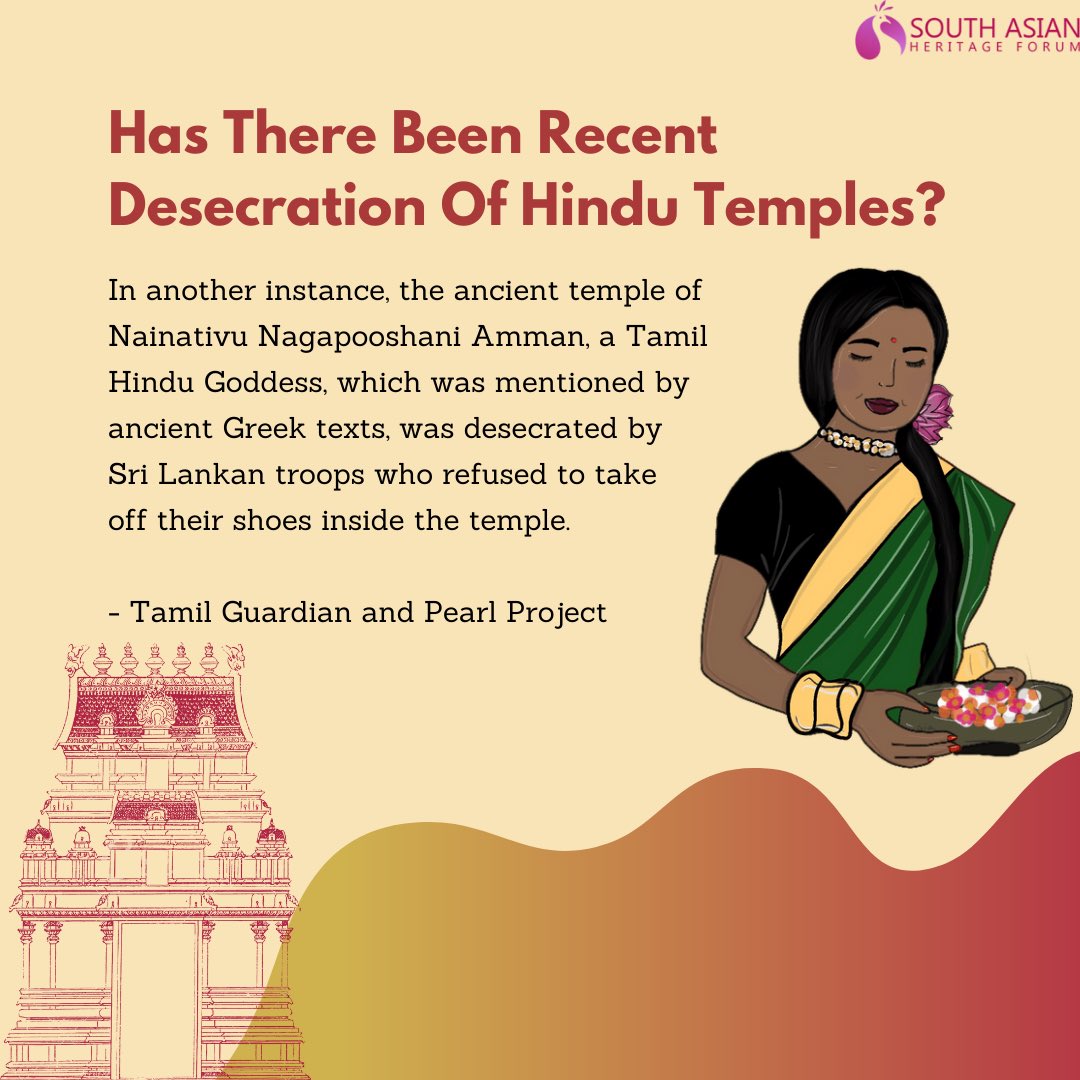
We will continue to monitor and report on the sufferings of all Sri Lankan minorities. Ethnic and religious conflict and bigotry in Sri Lanka need to end in order for Sri Lankan minorities to be given a voice and representation.
• • •
Missing some Tweet in this thread? You can try to
force a refresh












